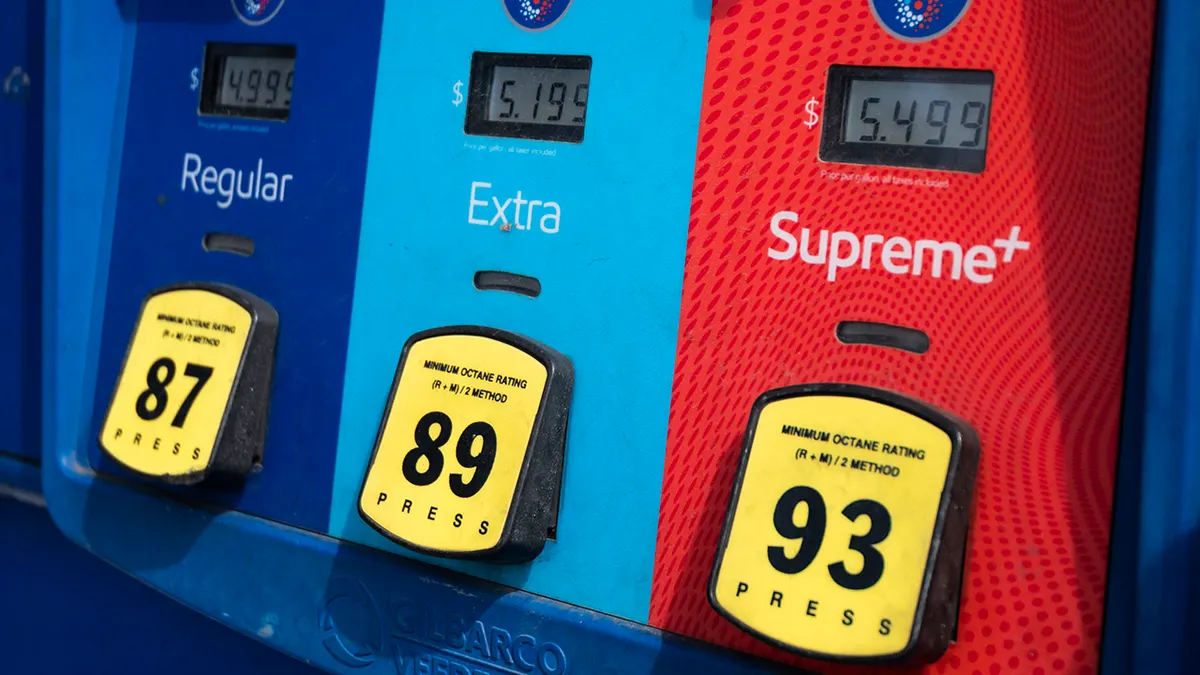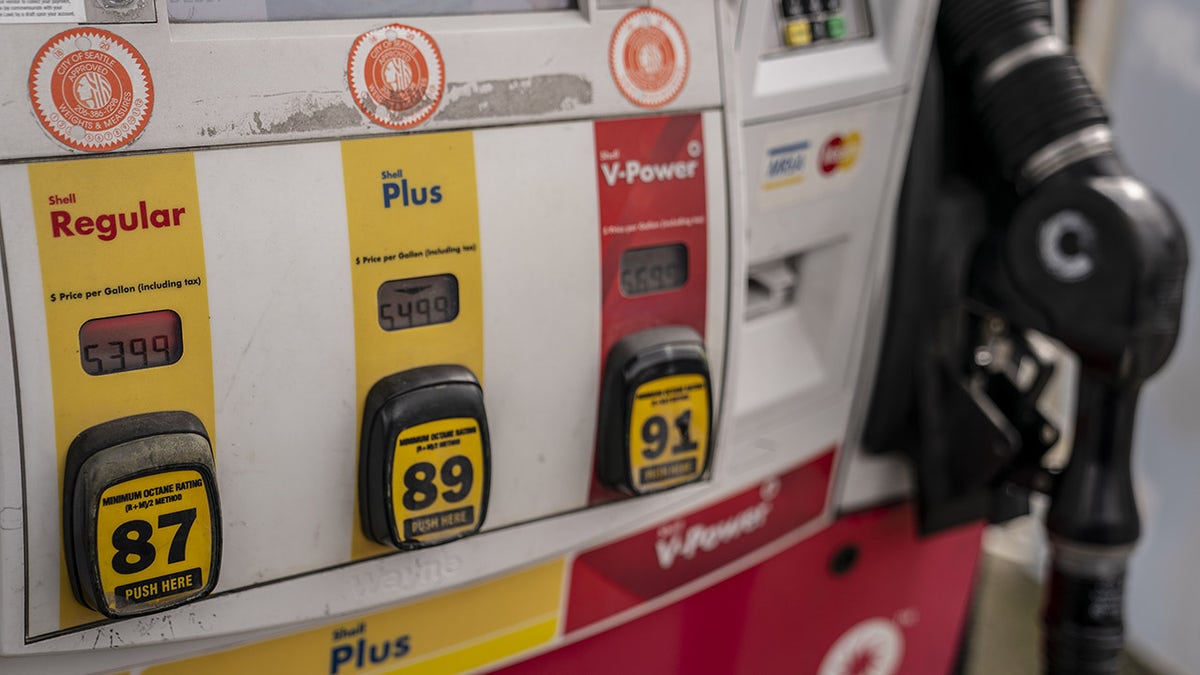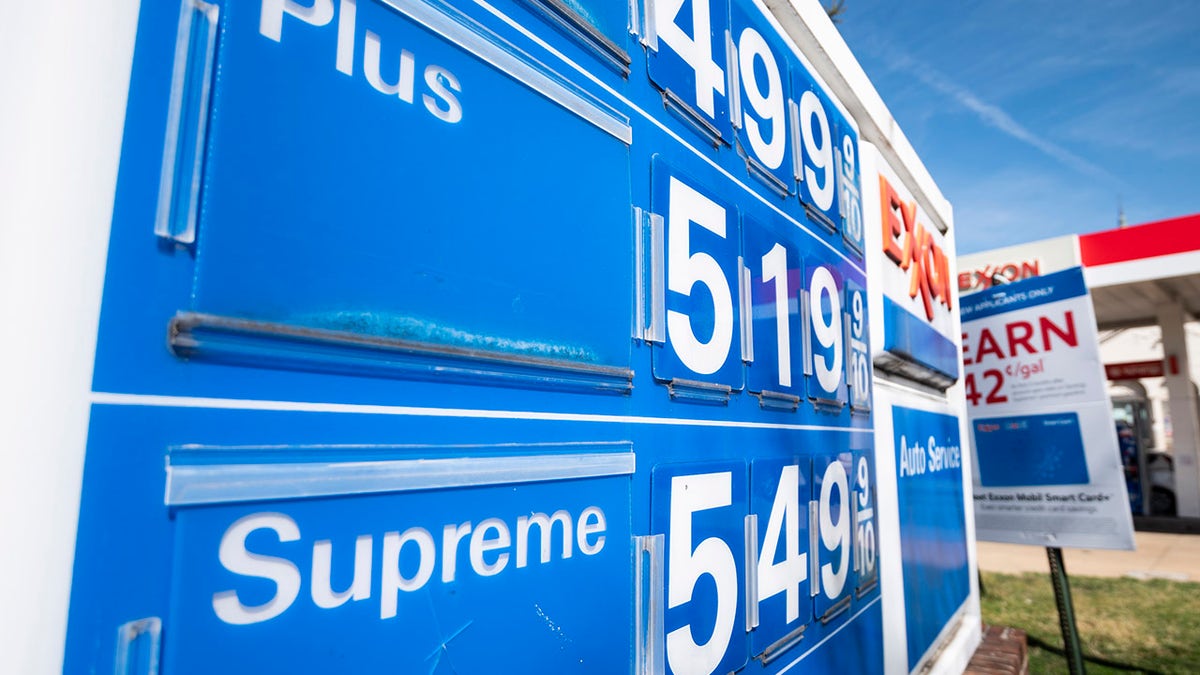Will Cain: Gas prices rose before Russian invasion
‘Fox & Friends Weekend’ host Will Cain on gas prices skyrocketing as Russia attacks Ukraine.
The national average for a gallon of gas hit a record high of $4.17 on Tuesday, but it’s much worse than that for some car owners.

The national average price for a gallon of gasoline hit $4.17 on March 8, but it's higher in several states including Washington. (Bill Clark/CQ-Roll Call, Inc via Getty Images)
That relatively low price is for regular fuel, while mid-grade is at $4.46 and premium is $4.74. The historic costs have many drivers wondering if they can get by with the cheap stuff.
Some vehicles, particularly high performance models, recommend or even require fuels with high octane ratings, while others only promise their best power and efficiency if you use it.
For example, Ford recommends the use of premium 91 octane gasoline in the Ford Mustang GT to get the most power out of its 460 hp V8, but it can run on regular 87 octane without any problems. Meanwhile, the Mustang Shelby GT500’s 760 hp supercharged V8 requires at least 91 octane, but the owner’s manual says 93 octane is preferred, especially if you’re going to be driving it with enthusiasm on a track.

Vehicles have different octane requirements depending on the type of engine they use. (David Ryder/Bloomberg via Getty Images)
Dr. Benjamin Lawler, associate professor at the Clemson University International Center for Automotive Research, explains that high performance engines that run at higher compression ratios or that used forced induction — turbochargers and superchargers — are more susceptible to a condition known as knock.
Knock occurs when the fuel injected into a cylinder auto-ignites out of sync with the flame front ignited by the spark plug, which creates pressure waves that can damage engine parts. Higher octane fuels are harder to ignite and resist this effect.
"It's really just the energy release rate, the speed at which the energy is released," Lawler said. "Another way to think about it is that the amount of time over which the energy is released is too small."
Modern cars have electronic knock sensors that monitor what’s going on in the cylinder and can adjust their calibration to match the fuel being used, but certain engines have a narrower operating window.

89 octane gasoline like Exxon's Plus is among the least popular types. (Bill Clark/CQ-Roll Call, Inc via Getty Images)
Lawler said drivers should follow what the owner’s manual says regarding fuel requirements, especially for vehicles more than 20 years old, but that newer ones can probably handle a tank or two of lower than optimal grade fuel in a pinch. It would likely take a few hundred miles of driving with knock before any significant damage was done, and you should fill up with a higher grade as soon as you hear it. There are also warranty concerns with using the wrong fuel to consider, and the SAE (Society of Automotive Engineers) agrees that deferring to the manufacturer is best.
CLICK HERE TO GET THE FOX NEWS APP
One curveball is 89 octane fuel, which typically isn’t used as a benchmark by automakers and has little practical reason to exist. Consumers have apparently figured this out as it accounts for less than 10% of the gasoline sold, compared to roughly 80% for regular.
It’s essentially a blend of the 87 octane and 91 octane gas in the pump, and its main advantage over regular is that it benefits from the higher concentration of detergent additives contained in premium fuel. These can help keep fuel systems clean, but aren’t vital to a new car’s operation. Nevertheless, Lawler said filling up with tank of mid-grade or premium is worth it now and then for that reason alone.
"It's probably a good idea to do that once a year or so, just to keep your engine running well," Lawler advised.




















